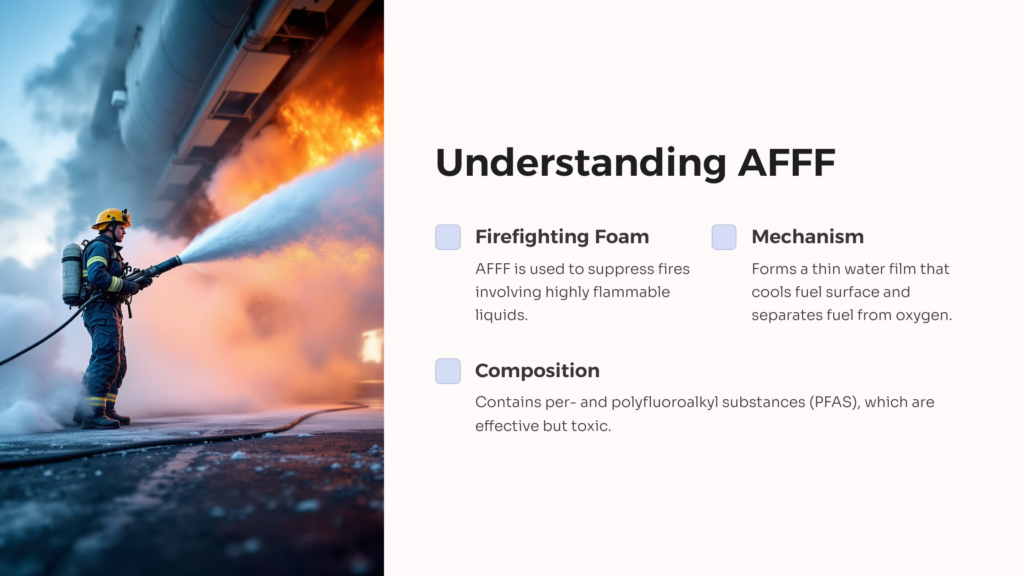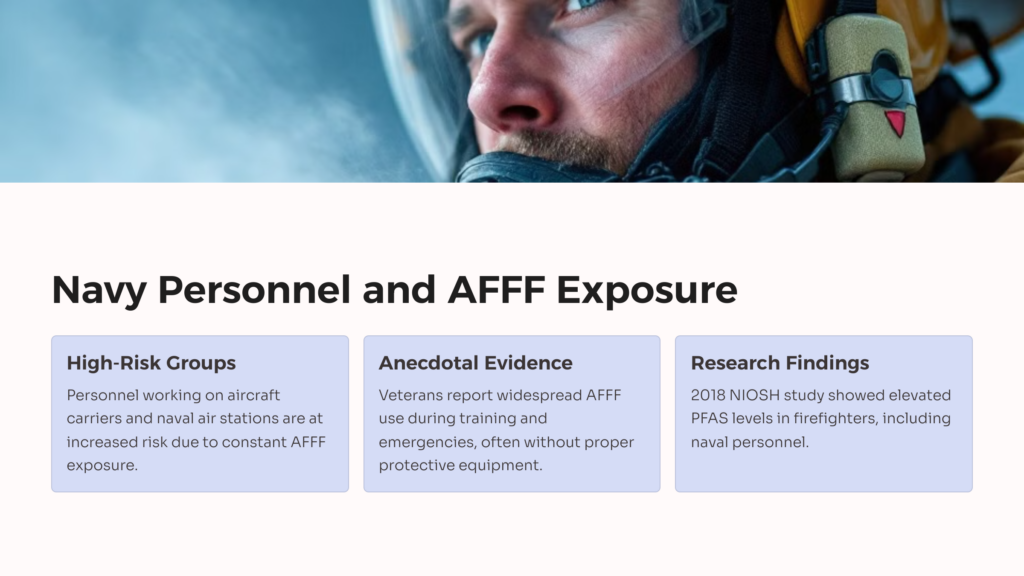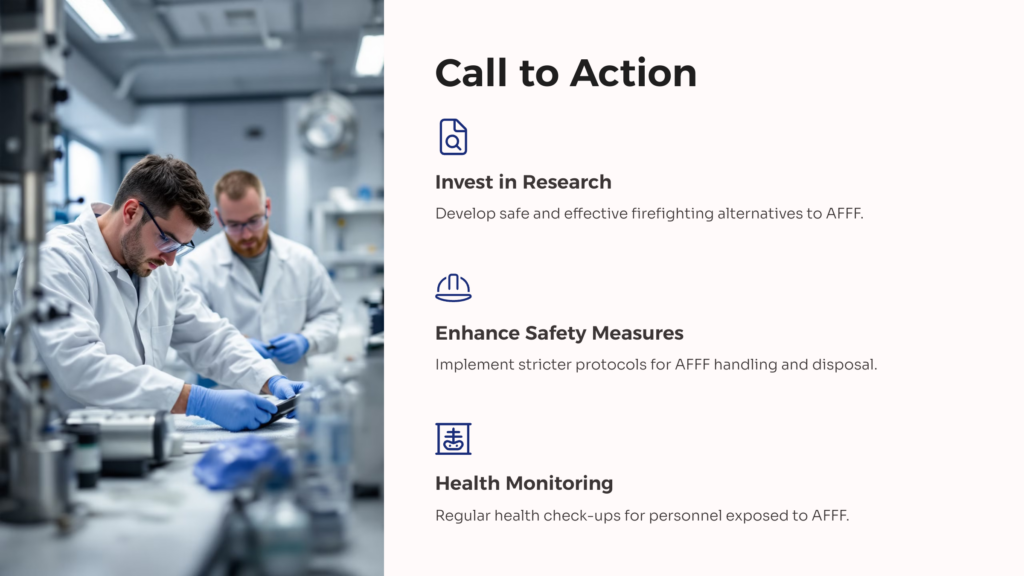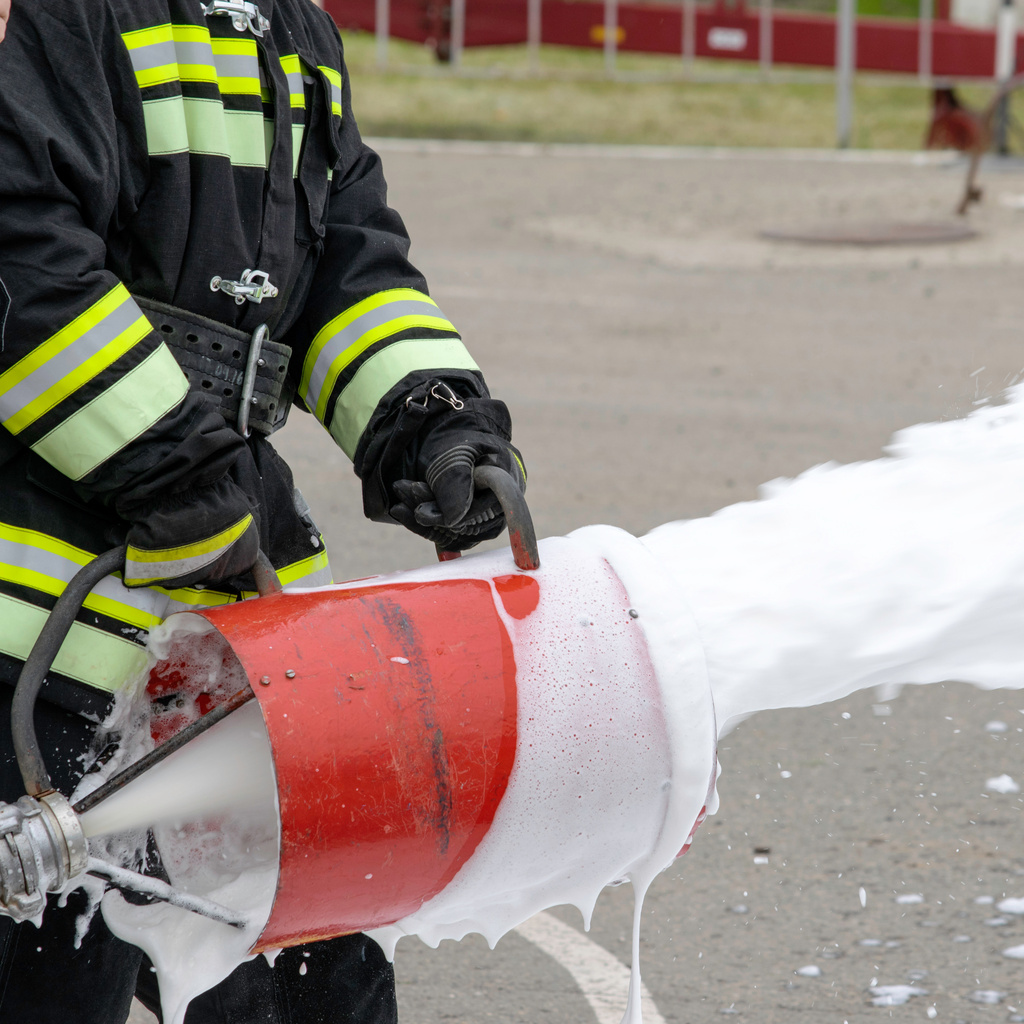The utilization of Aqueous Film Forming Foam (AFFF) has been crucial in naval firefighting efforts for years. However, emerging studies linking AFFF exposure to numerous health issues raise significant concerns. This article delves into what AFFF is, its use in the Navy, and its associated health risks, providing a comprehensive overview of the issue, particularly aimed to keep Navy personnel informed.
What is AFFF?

Aqueous Film Forming Foam, more commonly known as AFFF, is a firefighting foam used to suppress fires involving highly flammable liquids. It works by forming a thin water film that cools the fuel surface, separating the fuel from the oxygen and thereby suppressing the fire’s combustion process. The unique efficiency of AFFF makes it the preferred choice to combat shipboard and aviation fires.
A crucial component in AFFF’s composition includes a group of synthetic chemicals known as per- and polyfluoroalkyl substances (PFAS). These chemical compounds are responsible for AFFF’s efficacy in quickly smothering fires. However, their systemic toxicity has proven to be a growing concern regarding human health.
AFFF Use in The Navy
The United States Navy started using AFFF around the 1960s, after highly flammable jet fuels caused extensive loss of lives and resources. Its powerful fire suppression capabilities lie in its ability to rapidly spread across the burning surface, creating a protective blanket that starves the fire of oxygen. AFFF was previously used in naval boot camps for training exercises, promoting realistic fire-combatting techniques.
Several incidents showcase the effective role of AFFF in combating naval fires. For instance, during the devastating fire aboard the USS Forrestal in 1967, which claimed 134 lives and injured hundreds, the lack of AFFF was noted as a contributing factor to the catastrophic outcome. In contrast, the use of AFFF in the USS Stark incident in 1987 and the USS White Plains fire in 1989 significantly reduced fatalities and damage. These events underscored AFFF’s importance in the Navy’s firefighting arsenal.
Health Impacts of AFFF Exposure
Though effective as a firefighting agent, AFFF is not without potential health consequences. The problem arises primarily from the PFAS chemicals, known for their environmental persistence and ability to accumulate in the human body, leading to medical concerns over time.
Exposure to AFFF can occur under various circumstances, such as accidental releases or improper disposal of the substance. Exposure routes include direct contact, inhalation, or ingestion, especially in situations where AFFF-contaminated water sources are used for drinking or bathing.
A number of health studies link AFFF exposure to a range of illnesses. PFAS chemicals have been associated with numerous health problems, including kidney and testicular cancer, infertility, thyroid disease, and developmental issues in children, among others.
Particularly concerning is the heightened risk for Navy personnel due to their constant exposure to AFFF. Prolonged exposure can have significant implications on the health of active service members, leading to chronic diseases and potential long-term health issues. Veterans who were exposed to AFFF during their service may suffer health complications years later. Currently, the Department of Defense, along with various public health organizations, enforces safety measures to manage and mitigate chemical exposure in the military.
Navy Personnel and AFFF Exposure

The Navy personnel, especially those working on aircraft carriers and naval air stations, are continually exposed to AFFF, significantly increasing their risk of PFAS-related health issues.
Anecdotal evidence from Navy veterans details the widespread use of AFFF during training and real-life emergencies, often without proper personal protective equipment.
Several research studies reinforce these narratives. A 2018 study by the National Institute for Occupational Safety and Health (NIOSH) showed elevated levels of PFAS in firefighters, including naval personnel, suggesting a direct correlation between AFFF exposure and adverse health effects.
Ongoing Litigation and Compensation Related to AFFF Exposure

The growing body of evidence against AFFF has triggered a series of lawsuits against its manufacturers. These lawsuits mainly argue that manufacturers were aware of the health risks posed by PFAS chemicals but failed to inform the public, putting countless lives at risk.
Consequently, claiming compensation for AFFF-related health issues is becoming an increasingly common practice. One notable case is the $850 million settlement reached between the State of Minnesota and 3M, one of the largest AFFF manufacturers, in 2018.
The future projections related to AFFF exposure suggest a surge in legal cases as further links between AFFF and health problems are established.
Call to Action

The implications of AFFF exposure for Navy personnel are severe, prompting immediate action to reduce these risks. As evidence regarding PFAS toxicity grows, manufacturers bear both the moral and legal obligations to develop less harmful firefighting alternatives.
The future of AFFF usage in the Navy is set to change drastically. The Navy is investing in research for safe and effective firefighting alternatives. The past cannot be altered, but these steps can influence the future positively, potentially saving many from the harms of AFFF exposure.
 AllVeteran.com Advisors
AllVeteran.com Advisors
With expertise spanning local, state, and federal benefit programs, our team is dedicated to guiding individuals towards the perfect program tailored to their unique circumstances.


















